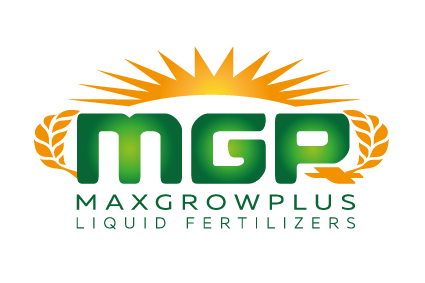MaxGrowPlus
The Importance of Liquid Fertilizers
Liquid fertilizers play a crucial role in modern farming. They provide plants with essential nutrients in a fast and efficient way.
- Advantages of Liquid Fertilizers
- Fast absorption: Plants quickly absorb liquid fertilizers, leading to faster growth.
- Easy application: Liquid fertilizers are mixed with water and can be applied by watering or spraying.
- Customized feeding: Farmers can adjust the dosage according to the specific needs of their plants.
- Primary macronutrients: Nitrogen (N), Phosphorus (P), Potassium (K) – essential for growth.
- Micronutrients: Iron, manganese, copper, boron, molybdenum – support specific plant functions and prevent deficiencies.
- Suitable for all types of crops.
- Frequently used in hydroponic systems where soil is not a factor.
Benefits for Plants and Farmers
Liquid fertilizers offer many benefits for both plants and farmers, including:- Fast nutrient uptake: Plants absorb liquid nutrients more quickly than granular fertilizers.
- Dosage control: Easily adjustable according to plant needs, minimizing waste.
- Better solubility: Liquid fertilizers dissolve easily in water, ensuring even nutrient distribution.
- Specialized formulations: Various formulas are available to meet specific plant needs, such as flowers, vegetables, or shrubs.
- For stressed plants: Help plants recover quickly from stress.
- For accelerated growth: Frequent use can increase the rate of plant growth.
- Time-saving: Easy and quick to prepare.
- Less waste: Reduced fertilizer loss improves cost-efficiency.
- Higher returns: Low cost and high absorption by plants lead to greater yields.
Foliar Fertilizer and Its Application
Foliar fertilizer is a concentrated solution used for feeding plants through their leaves.
Main Advantages:- Rapid absorption: Nutrients are absorbed directly through the leaves.
- Specialized formulas: Offers various micronutrients optimized for specific plant needs.
- Best time for application:- Apply during moderate temperatures, either in the morning or late afternoon.
- Manual spraying: Use spray bottles or backpack sprayers for targeted application.
- Mechanical spraying: Use high-pressure pesticide sprayers with appropriate nozzles.
- Irrigation systems: Integrate into drip irrigation for even distribution.
- Nitrogen-based liquid fertilizer: Stimulates green growth.
- Calcium-based liquid fertilizer: Supports overall plant development throughout the growing season.
- Potassium-based liquid fertilizer: Enhances fruiting and plant resistance.
- Always dilute the fertilizer according to label instructions.
- Apply regularly, especially during the active growing season.
Core Principles of Foliar Feeding
Foliar feeding is an important method of plant nutrition, offering fast absorption through the leaves.
Key Principles:- Choose the right fertilizer: Foliar fertilizers provide a variety of nutrients. Main components include nitrogen (N), phosphorus (P), and potassium (K).
- Correct concentration: Proper dilution of the solution is crucial.
- Application timing: Apply early in the morning or late in the afternoon to prevent evaporation.
- Frequency: Depends on plant needs, generally recommended every 2–3 weeks.
- Soil conditions: Particularly useful in poor or dry soils with low nutrient availability.
- Synergy with soil fertilization: Can be combined with soil fertilizers for optimal results. This combination promotes better plant development.
Steps for Proper Fertilization- Choose the right fertilizer:
- Dilute the fertilizer:
- Apply the fertilizer:
Use high-pressure automatic sprayers for larger areas.
Apply to moist soil to avoid plant stress.- Frequency:
Application Frequency and Dosage
Proper application of liquid fertilizers is essential for optimal plant growth. Frequency and dosage play a key role.
Application Frequency:- Most plants: Every 2–4 weeks.
- Aromatic herbs: Every 4–6 weeks.
- Ornamental plants: At the beginning of the growing season, then every 2–3 weeks.
- Typically: 1–2 capfuls per liter of water.
- Apply in the morning or evening to avoid leaf burn.
- Always water plants before fertilizing to ensure even distribution.
Choosing Liquid Fertilizers
Choosing the right liquid fertilizer is essential for proper plant care. They offer fast nutrient absorption, making them a popular choice among farmers.
Key Factors for Choosing:- Plant type: Different plants have different needs—for example, flowers vs. vegetables.
- Nutrient composition: Check the main components—nitrogen (N), phosphorus (P), and potassium (K). The balance between them affects growth.
- Concentration: Some fertilizers come in more concentrated forms. Always follow dilution instructions.
- Compost tea: Organic and supports beneficial microorganisms.
- Foliar fertilizers: Applied to leaves for rapid nutrient absorption.
- Specialized formulas: Target specific plant needs like flowering or fruiting.
- Application frequency: Apply every two weeks for best results.
- Method: Use by watering or spraying.
- Timing: Apply in the morning or evening for optimal absorption.

© 2025 MAXGROWPLUS All rights reserved. This includes the method, device, and technology, which are also subject to copyright protection.

